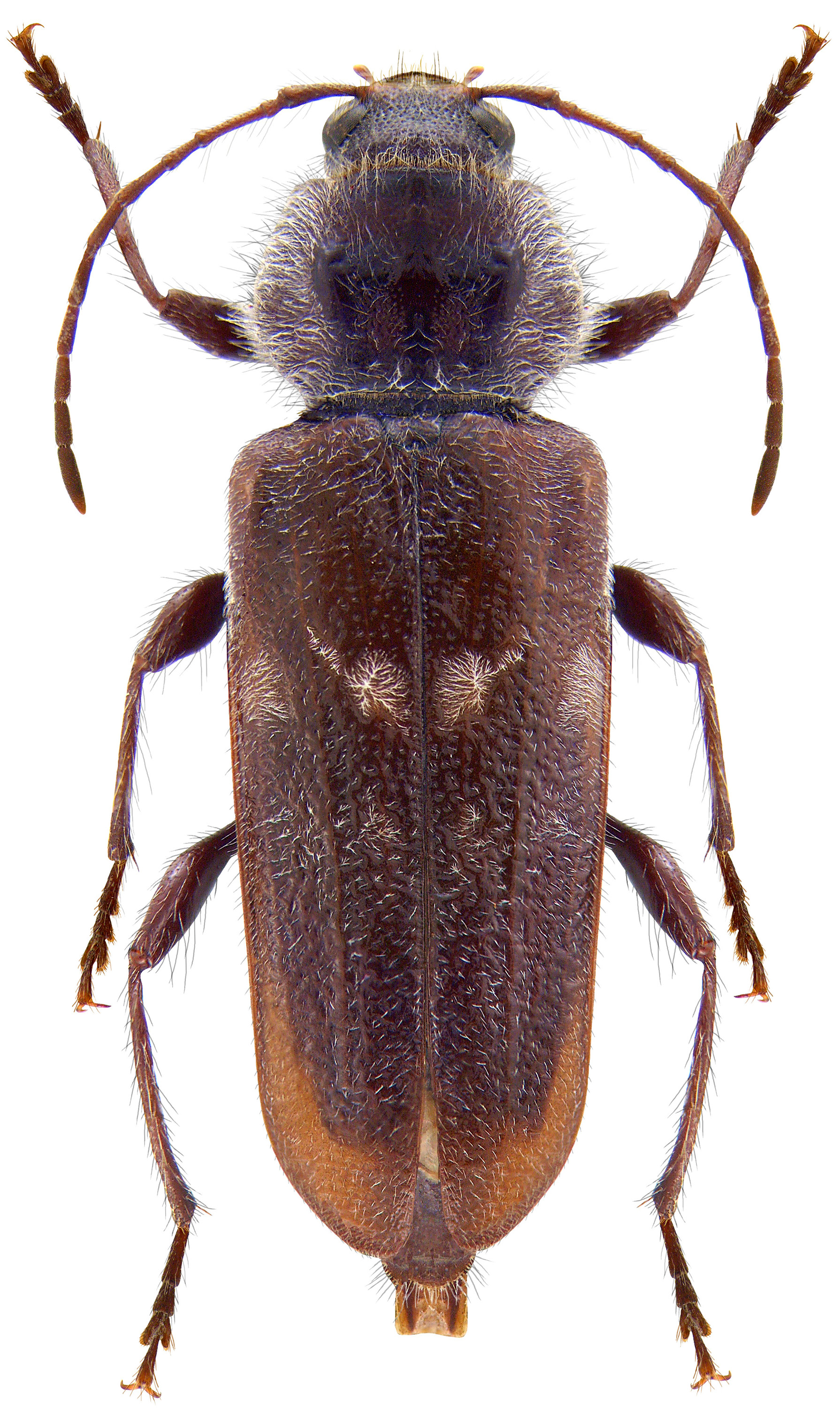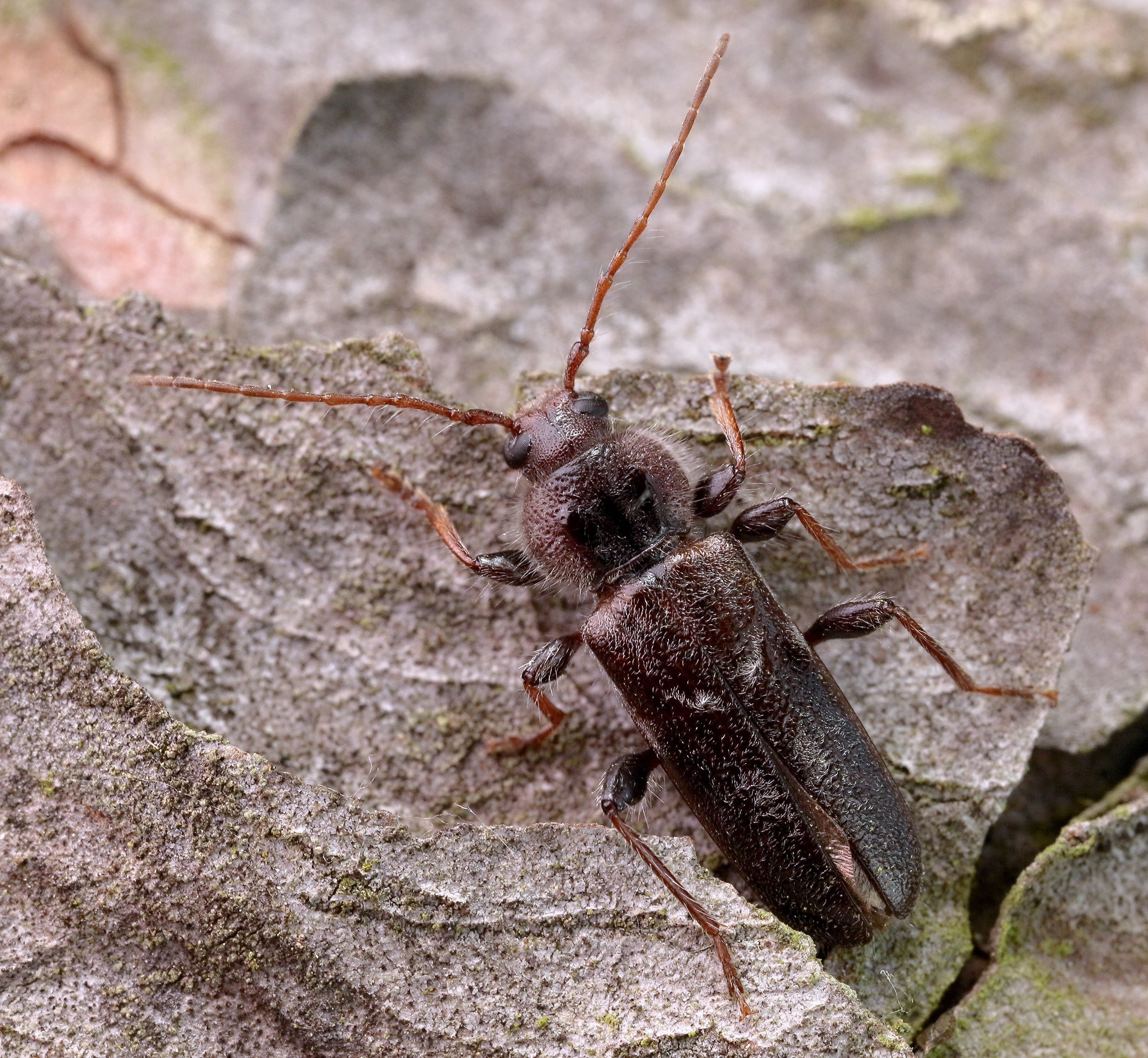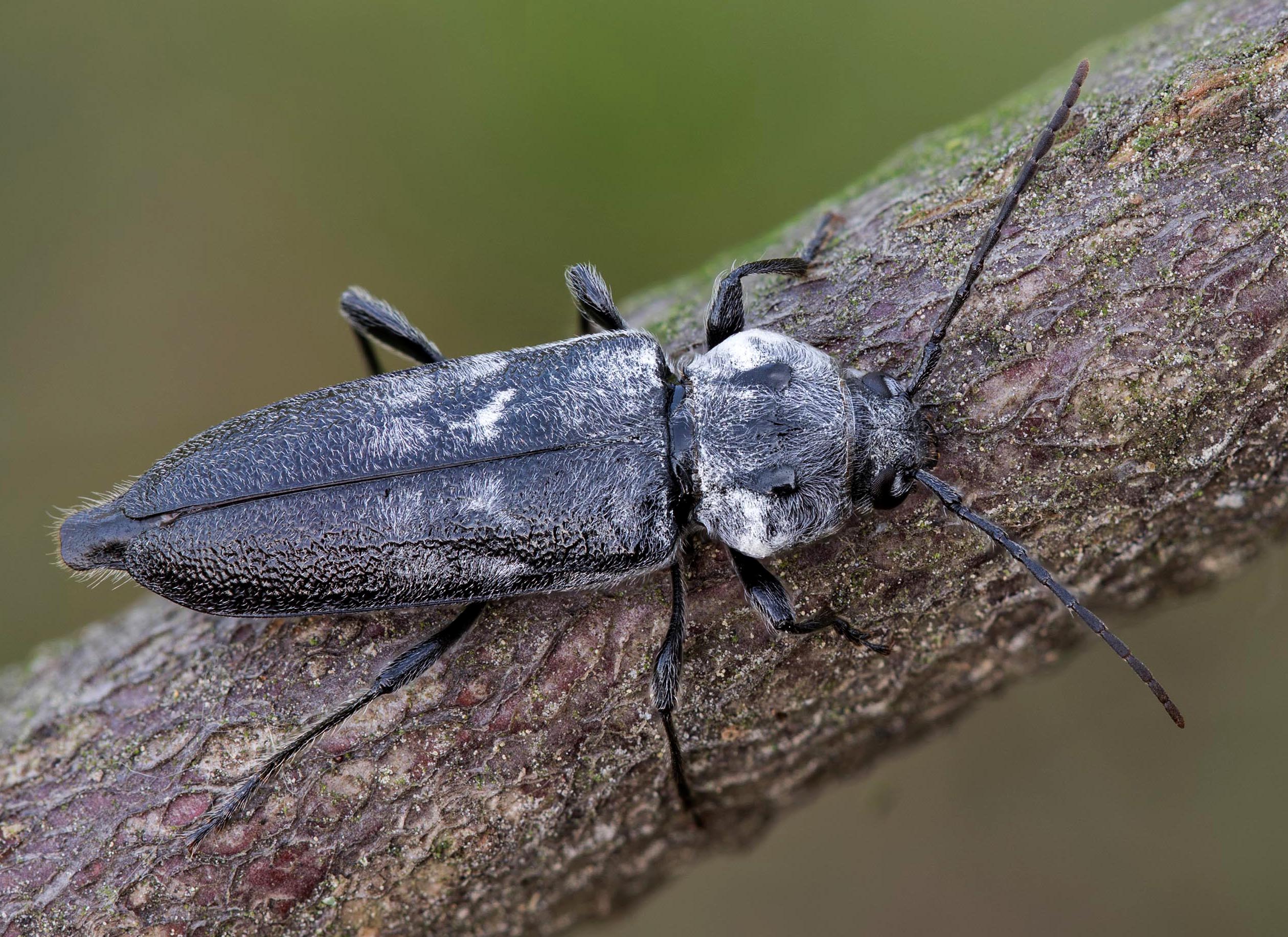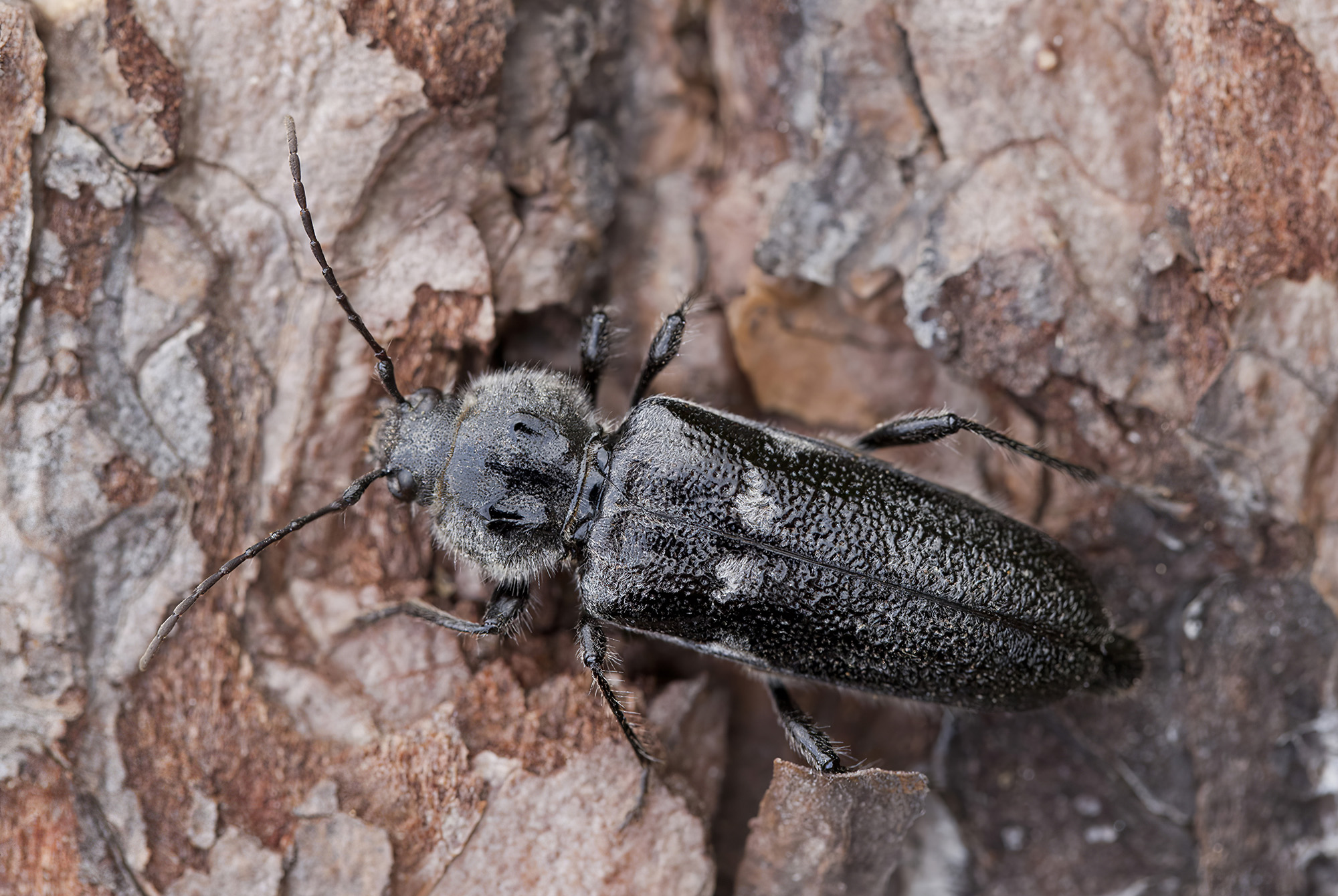[= Cerambyx caudatus Degeer, 1775]
[= Callidium linneianum Laicharting, 1784]
[= Callidium affinis Sevenius, 1825]
[= Callidium puellum Villa & Villa, 1833]
[= Hylotrupes bullatus LeConte, 1850]
[= Callidium asæmoides Pascoe, 1863]
[= Hylotrupes koziorowiczi Desbrochers, 1873]
[= Hylotrupes inaequalis / latus / nematocerus / puncticollis / incertus / pedicellatus / minutus Casey, 1924]
Subfamilia: CERAMBYCINAE / Tribus: HYLOTRUPINI

[Photo © David Navrátil, click on the picture for 4K resolution]
Hylotrupes bajulus, a species originating in Europe, and having been spread in timber and wood products, now has a practically cosmopolitan distribution, including Southern Africa, Asia, the Americas, Australia, and much of Europe and the Mediterranean. H. bajulus is probably the most feared and dangerous species of longhorn beetle in Europe - it damages timber (especially wood from pines, spruces, firs and larches) in rural and urban buildings and causes large financial losses every year. Larval development in completely dead debarked processed coniferous wood. The larvae are able to survive and develop in the dry timber for up to 17 years, in addition, adults can mate and reproduce inside the infested wooden structures without leaving the larval gallery. This makes the detection of an attack very difficult. Several generations of larvae can feed in timber without leaving visible traces on the surface, while its inner part can be completely destroyed and changed into a dust. Adults, active from June to September, are during the day hidden in crevices or gaps between the beams. Sometimes it is possible to find beetles in the wild in old pine forests [❖][✧].
Hylotrupes bajulus has been described from Sweden as Cerambyx bajulus by Carl Linné in 1758 [✮].
Body length: 7 – 21 mm Life cycle: 2 – 17[!!] years Adults in: June – September Host plant: prefers dead wood of coniferous trees (Pinus spp., Picea abies, Abies ssp. Larix decidua) Distribution: synantropic species, whole WP area
The depicted mounted beetles were collected in: ♂ – Agios Georgios–Argyrades environs (Korissia municipal unit, South Corfu municipality, Corfu, Greece) on June 6–17, 2003; ♀A – Vojenské cvičiště Bzenec nature monument (Bzenec, Hodonín district, South Moravia, Czechia) on July 12, 2008; ♀B – Comps-sur-Artuby environs (N43°43′45″ E06°27′35″; 990 m a.s.l., Var department, Provence-Alpes-Côte d’Azur region, France) on July 12–21, 2016.The living specimen were found in Prague centre (Central Bohemia, Czechia) on May 29, 2018 and in Králův Dvůr - Zahořany (Beroun district, Central Bohemia, Czechia) on July 12–21, 2015, respectively.
Collected by David Navrátil, Miroslav Polcar and Daniel Rydzi
[❖]
Vitali F.:
Atlas of the Insects of the Grand-Duchy of Luxembourg: Coleoptera, Cerambycidae.
Ferrantia, Musée national d’histoire naturelle, Luxembourg 79: 1-208 [pages 79-80], 2018. [download]
[✧]
Sláma M.E.F.:
Tesaříkovití – Cerambycidae České republiky a Slovenské republiky.
[ Cerambycidae of the Czech Republic and Slovak Republic. ]
Milan Sláma private printing, Krhanice, 383pp [page 274-275], 1998 [ISBN: 80-238-2627-1]. [download]
[✮]
Linné C.:
Systema naturæ per regna tria naturæ secundum classes, ordines, genera, species, cum characteribus, differentiis, synonymis, locis.
Systema naturae (Editio 10) Laur. Salvius, Holmiae 1: 824pp [page 396], 1758. [download]

[Photo © Milan Lovětínský]


[Photo © Daniel Rydzi]
| Subfamilia | Cerambycinae Latreille, 1802 |
| Tribus | Hylotrupini Zagajkevich, 1991 |
| Genus | Hylotrupes Audinet-Serville, 1834 |
| Species | Hylotrupes bajulus (Linnaeus, 1758) |
